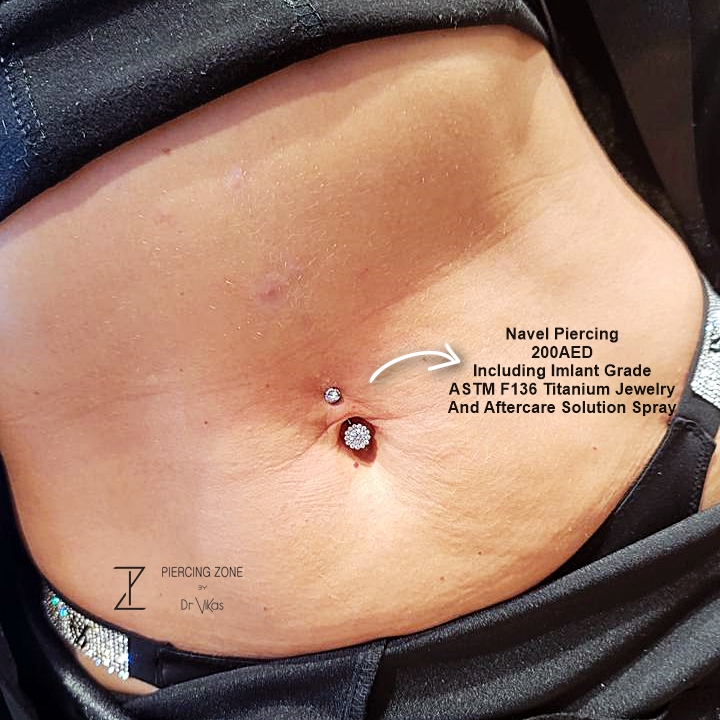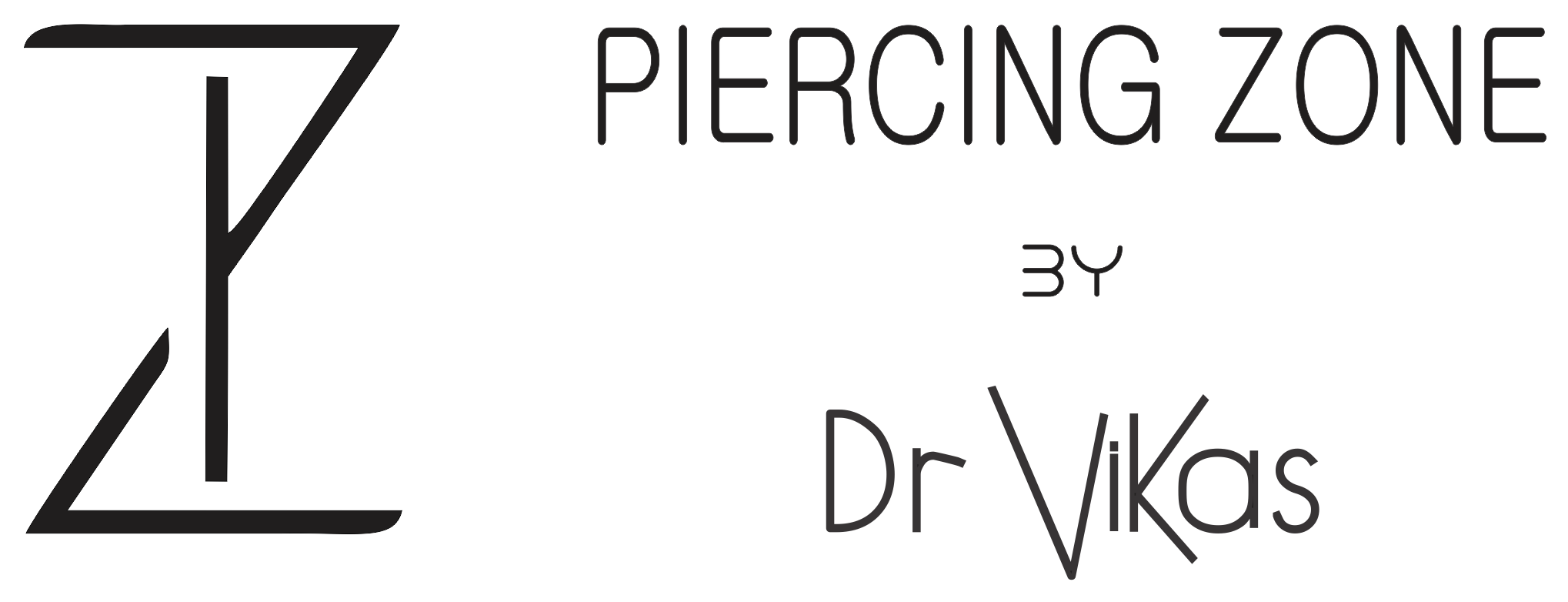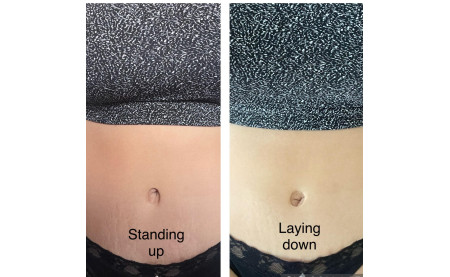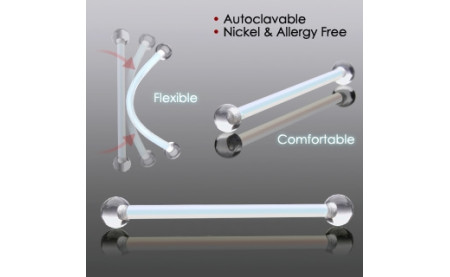Everything You Need To Know About Belly Piercing

The Navel Piercing, often known as a belly button piercing, is one of the most popular non-ear piercings.
They are adaptable and stylish, with a variety of jewelry options to select from, making them a piercing that can be tailored to almost any style or body type. They are also easy to conceal beneath clothing, making them a versatile piercing that can be worn at work or in other professional contexts.
From dangle charms and bent barbells to captive bead rings and more, there's something for everyone!
Here, you will find almost everything you need to know about belly piercing.
Belly button anatomy and piercing placement
A navel piercing is an anatomically dependent piercing. This means that you must have the necessary anatomy to get this piercing done; the piercer must ensure that they can pierce into the inside of the navel so that the piercing heals correctly. If the piercing only goes through the skin of the stomach, it will not heal properly.
Each belly button is unique, and some people have what are known as "advanced navels," which can vary in anatomy and require a high level of ability to operate so that they are properly placed and heal effectively. This does not imply that they are more difficult to perform; rather, they require a piercer with professional knowledge and experience to do it appropriately.
Advanced belly button piercings include the following:
Outies These belly buttons are fairly common, but they require a bit more skill to ensure perfect placement. When your piercer performs an anatomy examination, they should ensure that you have the appropriate navel shelf to sustain the piercing. Trust your piercer. If they tell you that your navel is not suitable for piercing, listen to their advice.
Post-pregnancy: The stomach stretches during pregnancy, which can permanently affect the skin. Some people have loose or sagging skin around or around their navels, just like those who get permanent stretch marks after pregnancy. While this does not necessarily impede the ability of these navels to be pierced, it does change the jewelry that must be used to pierce them first.
Surgically altered: Certain surgical techniques, such as laparoscopic surgery. C-sections, tummy tucks, and other surgical procedures modify the belly button. In certain cases, the altered tissue may have too much scarring or is no longer viable for piercing. Scar tissue reduces blood flow, making it more difficult for a new belly button piercing to heal. However, this does not mean that you cannot have your navel pierced; instead, you may need to go to a piercer who has expertise with reconstructed navels and understands what to consider while piercing them. The bottom line is that when you sit, stand, and lay down, the bottom of the piercing needs to rest safely and comfortably inside your navel.
Getting Ready For Your Belly Piercing
Choose your piercer wisely; never use a gun or machine if someone tells you to. The ideal technique to pierce a navel is with a 14G hollow piercing needle and 14G ASTM F136 Titanium or 14/18K Gold jewelry with a minimum length of 10mm. You want to make sure they're using best practices, sanitizing their equipment, and doing everything they can to keep their clients safe. This is why piercings should only be performed by qualified specialists.
Trust your piercer. If they tell you that your navel is not suitable for piercing, listen to their advice. Certain piercings are not suitable for everyone's body, and going ahead with them can result in difficulties and injury.
Unlike typical lobe piercings, which heal in 12-18 weeks, belly button piercings can take 9-12 months. Understand that you are in for the long haul and must follow proper aftercare until the healing process is complete. Make sure you enjoy your starter jewelry; you'll be wearing it for a while.
Another reason to be selective about your jewelry is to avoid allergic reactions. Some inexpensive jewelry contains nickel and lead, which can cause unpleasant reactions that are frequently misdiagnosed as infection. Always select ASTM F136 Titanium, Gold - 14 or 18K, Platinum, or Niobium.
Process of Belly Piercing
- Anatomy Check
- Select A Jewelry
- Numbing Cream Application
- Piercing Process
- Aftercare Lessons
-
Anatomy Check
To inspect your belly button anatomy, we may ask you to lie down on the piercing bed or perform it while you are standing. Please wear appropriate clothing, as if you come wearing a one-piece dress, you may need to move it completely up. After reviewing the anatomy, you may proceed to choose a lovely piece of jewelry for it.
-
Select A Jewelry
When getting your belly button pierced, the normal size jewelry is 14 gauge.
The gauge number refers to the thickness of the bar. If the bar is thinner, it could irritate the piercing. For example, it may cause the barbell to cut at the piercing or be yanked out.
The bar is normally 10mm long; it is slightly longer to allow for swelling, drainage, and healing.
We do not recommend starting a belly piercing with a circular ring or other dangling jewelry. Always start with round stone jewelry or follow your piercer's recommendation.
-
Numbing Cream Application
We offer numbing cream for belly piercing at no additional cost; however, it is entirely up to you whether to use it or not. It comprises a topical numbing cream with 29% lidocaine, which can lessen pain sensations by up to 50%. After applying the numbing lotion, allow 25 to 30 minutes for it to take effect.
Each person is unique, and the intensity of pain will change from person to person. In terms of pain, belly button piercings fall somewhere in the lower range almost 3 out of 10. Where 0 is no pain and 10 is extreme unbearable pain.
-
Piercing Process
Belly piercing should be done in a flat lying down position; if your piercer attempts to do it while you are standing, leave immediately.
First, we will clean any numbing cream off your abdomen if any, after cleaning belly and its surroundings with alcohol and iodine. We will next mark a center line on your belly as you stand straight. After you have approved the drawn line, we will do the final marks while you are lying flat. Piercing and jewelry insertion will be completed fast. Take some big breaths and congratulations on your gorgeous belly piercing. Blood and a sense of pain are usual on the first day. Don’t panic, and take something like Ibuprofen-- avoid Tylenol and never aspirin as it causes more bleeding.
-
Aftercare Lessons
Let's face it: the internet is overflowing with suggestions. Some of it is really not that good. Make sure you listen to your piercer and follow their instructions.
How long does it take for a belly piercing to heal?
Navel piercings often heal in 6 months to a year, however this varies by person. The extended healing time is due to the abdomen's avascularity, or lack of blood supply. It also experiences the most stress as a result of natural body movement and clothing pressure.
Another important aspect of healing the piercing is how well you care for your body overall. This include focusing on your overall health, nutrition, and sleep habits.
After 4 to 6 weeks, the piercing may be less swollen and appear healed, but it is still healing. While it may appear that it takes a long time to heal a body piercing, right care will make the process move more smoothly and swiftly.
You might notice a white liquid creating a crust around the piercing. This is merely lymph fluid, which is a normal part of the healing process. Clean it gently with saline solution, but don't push at it.

THE DO'S AND DONT'S OF PIERCING AFTERCARE
DO'S
-
Prioritize cleanliness
The most important aspect of proper piercing aftercare is hygiene. You might ask what the best way to clean a new piercing is.
Use Piercing Zone saline solution which is both moderate and effective. Soak a piece of tissue or a piece of gauze in the solution and gently apply it to the piercing region twice daily. This ensures that any external irritants, such as dirt or dried lymph fluid, are effectively removed without creating further stress to the skin.
-
Wash Under Shower
Apply a small amount of any mild soap on the new piercing and the area for about 30 seconds. Thoroughly rinse afterward.
-
Wear Piercing-Friendly Clothing.
The placement of your piercing frequently dictates the type of clothing that is most appropriate throughout the healing process. Be especially cautious in locations where clothing regularly rubs against it, such as the belly button.
During the recovery phase, do not wear anything highwaist.
Tight clothing might cause unwanted friction, which can irritate the piercing and slow the healing process. Choose loose-fitting and breathable fabrics. Because your piercing is at an area where it can become entangled in clothing, be extra cautious when dressing or undressing.
-
SLEEP WITH CARE.
While this may seem strange at first, altering your sleeping habits might greatly enhance your piercings. For example, if you have a new ear or navel piercing, consider sleeping on the opposite side. This easy modification relieves any potential pressure or friction on the new piercing, ensuring it stays undisturbed throughout the night. After receiving a belly piercing, do not sleep on your stomach because pressure is the most deadly enemy of piercings.
-
BE AWARE OF THE EXTERNAL ENVIRONMENT
Be cautious if you enjoy long baths or go to the gym frequently. Excessive sweating may irritate the piercing. Make sure to clean the area after the exercise.
Your gym pants should always be buttoned down to your piercing.
When it comes to baths, quick showers are preferred. Avoid immersing your piercing, particularly during the first month of recovery.
-
Celebrate Patience.
Piercing healing is not an overnight procedure. Depending on the area and your body's natural healing ability, it can take weeks to months. When things appear to be going well on the surface, it may be tempting to change the jewelry or skip the aftercare routine.
No changes of jewelry for at least 6 to 8 months.
Remember that just because it appears cured does not mean it is entirely healed. Internal healing can take longer, so being patient gives your piercing the best opportunity of properly healing without issues.
-
Stay hydrated and eat well.
Your general health is extremely important in the healing process. Drinking enough of water and eating a nutritious diet might help your body's natural healing process. Vitamin C and E, in particular, are known for their skin-repairing abilities.
DONT'S
-
Touch with unwashed hands.
One of the quickest ways for illnesses to spread is through the transfer of bacteria from unwashed hands. Resist the impulse to touch or tinker with your new piercing until you've thoroughly washed your hands. Every time you do this, you risk introducing new bacteria into the healing location.
-
Use pools and hot tubs.
While taking a dip in the water may sound pleasant, pools and hot tubs may be breeding grounds for bacteria. The chemicals used to treat these waterways may potentially irritate your new piercing. It is advisable not to submerge your new piercing in any body of water until it has totally healed.
-
Use alcohol or hydrogen peroxide.
While these appear to be fantastic cleaning agents, they are not suitable for healing piercings. They can dry up the skin and slow the healing process. For optimal piercing aftercare, use a gentler saline solution.
-
OVER CLEAN.
It may seem contradictory, but there is such a thing as overcleaning. While maintaining cleanliness is important, washing your piercing too regularly can deplete the area's natural oils, causing dryness and irritation. Twice every day is usually adequate.
-
Rotate or twist the jewelry.
Some people believe rotating or twisting the jewelry will keep it from sticking to their skin. This is a myth. In truth, doing so may introduce bacteria into the piercing and perhaps rip the healing skin.
-
Apply Makeup or Lotions near the Piercing.
Makeup, lotions, and fragrances contain substances that can irritate your new piercing. It is advised to avoid using such things on your piercing until it has healed completely.
Recognizing an infected belly button piercing
It is normal to experience some soreness, redness, and swelling after getting your belly button pierced. Your body reacts naturally to the alien object—the piercing. But how can you tell the difference between the natural healing process and an infected belly button piercing?
Key Signs of Infection
It is normal to see some redness and swelling around the new piercing site; this is the body's natural reaction to trauma. However, the duration and severity of these symptoms distinguish the natural healing process from a possible infection.
While some inflammation is normal, a piercing that remains extremely swollen and red for more than a week raises concerns. Extended inflammation could be your body's method of letting you know it's fighting hazardous microorganisms.
The presence of discharge in a freshly pierced belly button is not usually a cause for concern. During the early stages, a clear or straw-colored liquid known as lymph fluid may seep out the puncture. This fluid helps the healing process.
However, when this discharge turns yellow, green, or gray, especially when accompanied by an unpleasant odor, it is generally indicative of an infection.
While some discomfort or stinging may be expected during the piercing procedure, rising pain is not. If the pain worsens rather than improves over the course of many days, this is cause for concern. An infected belly button piercing can produce throbbing discomfort that may extend to other locations.
An infected piercing site frequently radiates warmth. If you touch the region surrounding your belly button piercing and it feels unusually hot, especially in comparison to other parts of your body, it could be a sign of an infection. Along with this, any unusual skin pigmentation, such as darkening or a bluish tint around the piercing, should be observed.
While this is uncommon, some people with an infected belly button piercing may develop a fever or flu-like symptoms. This indicates that the body is working overtime to combat an invasive illness, which should not be taken lightly.
Why Infections Develop
Belly button piercings, like all piercings, penetrate the skin's natural barrier. This makes the pierced area more prone to infection.
When our skin is healthy, it serves as a fortress, blocking out the bulk of harmful bacteria and pathogens. Once punctured, the protective wall is briefly damaged, allowing bacteria to enter.
One of the primary causes of an infected belly button piercing is the presence and spread of dangerous bacteria in the wound. This might come from a variety of sources. For example, if piercing equipment is not adequately sanitized, microorganisms might be introduced directly into the piercing site.
Even in cases where the piercing studio maintains the strictest hygiene standards, the risk is not completely avoided. What's the reason? Microorganisms abound in our daily lives, and the piercing is a susceptible location until it heals completely.
Daily activities and behaviors also play a vital effect. Consider the location of a belly button piercing. It's a place that commonly comes into contact with waistbands, belts, and other garments. If these are filthy or moist, bacteria might be introduced or trapped against the piercing.
Furthermore, while perspiration is sterile, excessive sweating might result in a moist environment around the piercing. Moisture can be a breeding ground for bacteria if the environment is not kept clean and dry.
Personal hygiene practices, or lack thereof, have a significant impact on the risk of infection. Neglecting to wash your hands before touching the piercing or failing to follow the recommended cleaning schedule might allow hazardous bacteria to develop. On the other hand, overcleaning or using harsh treatments can irritate the area, deplete it of its natural protective oils, and, ironically, increase the chance of infection.
Finally, the body's own immunological response may be an influence. Even the smallest wounds can serve as an access point for infections in those with impaired immune systems.
What to do if i feel i have an infected belly piercing?
First and foremost thing is don't try to become a piercing doctor. First always contact your piercer so that they can check if its an infection or inflammation. Never remove your jewelry without consulting your piercer. Your piercer is the best person to check your piercing and do the needful. Behind every infected or an inflamed piercing there is a reason, first your piercer will rule out the reason. Then they will recommend you the next step.
Related Post
Belly Button Piercing After Tummy Tuck
Points to Consider Before Getting a Belly Piercing After a Tummy Tuck
The benefits of using bioflex if the piercing is not healing properly.
Bioflex is a type of biocompatible plastic material commonly used in body piercing jewelry. It is a flexible, hypoallergenic, and non-metallic material that is ideal for individuals with metal sensitivities or allergies.




